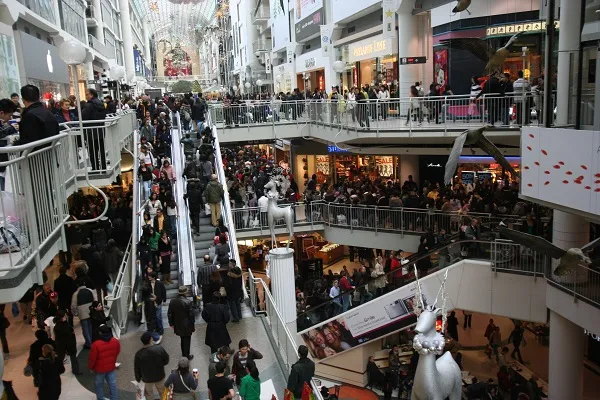
Retailers are expecting strong Christmas revenue and margins, says research
Many retailers expect Christmas 2016 sales to exceed 2015.
Three-quarters (76%) of Australian retailers expect Christmas sales in 2016 to exceed those in 2015, according to the latest Deloitte Retailers' Christmas Survey. Nearly a third (28%) are anticipating sales growth in excess of 5%, compared to 18% in 2015 and none in 2014. 26% are expecting 2-5% growth this Christmas.
In terms of profitability, the majority of retailers (87%) expect at a minimum to maintain their margins over Christmas. Only 13% anticipate decreased margins, compared to 26% in 2015. Nearly half of all respondents expect to see an increase, albeit modest, in their margins.
David White, national leader of Deloitte's Retail, Wholesale & Distribution Group said this confidence stems from a combination of a relatively good financial year for many retailers, low interest rates and strong performances in the key sector markets of News South Wales and Victoria.
“Retailers are renowned for their ‘glass half full' philosophy, and there is a distinct air of confidence amongst many as we approach the peak sales season,” he said.
“Certain retail sectors have faced more challenging environments, such as groceries where there has been strong price deflation. Nevertheless, it's been a positive year for many overall and expectations for Christmas 2016 are good, with most retailers expecting growth in revenue and margins. Competition is fiercer than ever, but Australian retailers seem more confident in their ability to rise to the challenge.”
The onward march towards a greater online share of the sales mix continues, though this year retailers are tempering their expectations about the online share of sales as digital strategies mature. Whilst the number of retailers expecting online Christmas sales above 6% has decreased from 47% in 2015 to 36% this year, over 80% still consider an effective digital strategy to be important to their business.
“What we are seeing is a convergence between bricks-and-mortar operators and online. Instead of a head-to-head fight with digital channels seeking to replace physical stores, the channels are working together to provide the customer with an integrated offering,” White said.
“Digital isn't just a sales channel. It's also a way of empowering and connecting with the consumer, and is more effectively being used to increase foot traffic to bricks-and-mortar stores and increase basket size.”
The war for the wallet this Christmas looks set to continue, with discounting anticipated to start earlier than ever. A third of retailers plan to begin discounting in early December, compared to 27% in 2015. Some 20% have yet to make the call on when, if at all, they will lower their prices to generate higher volumes.
White said: “One of the critical decisions facing retailers at this time of year is when to discount and by how much. We can expect some early opportunities for consumers as retailers look to avoid being left nervously biting their nails on Christmas Eve. It appears many retailers are prepared to sacrifice some margin early on to ensure they aren't forced to heavily discount later in the festive period.”
Heading into 2017, retailers appear positive about their prospects with new stores, new products and online offerings top of mind to drive sales growth. 82% are expecting an increase in earnings over the next 12 months – exactly the same percentage as last year. More surprisingly, a third anticipate earnings growth in excess of 10%.
71% intend to increase their store footprint in the next 12 months – the highest seen in the five years of the survey – and 42% expect new stores to be the most significant driver of growth in 2017.
White said: “As companies refine their omnichannel strategy, what is becoming clearer is the critical role of the store. With many pure play online retailers also now seeking a physical retail presence, the reality is that making money through online sales alone can be incredibly tough.
“But underlying this, significant change is taking place in terms of what these new bricks-and-mortar stores look like and the role they perform. New stores are becoming intertwined with retailers' online offering, store layouts are changing, interactive technologies are being introduced, and the customer experience is being transformed."
“We partly have the influx of international competitors to thank for helping drive this change – foreign-owned bricks-and-mortar stores are cited as the greatest competition for Australian retailers. But there are also some great examples of Australian retailers driving innovation in this space such as the increasing use of flagship stores designed to primarily build brand not sales or the use of endless aisles to allow smaller store formats whilst still meeting the needs of the customer," White said.
“What is noticeable is that foreign-owned online competition is now seen as the least threatening competitor. This both reflects the weakening of the Australian dollar, making overseas websites more expensive, but also the rise in the number and quality of online offerings being offered by domestic based retailers."
“With continued strong economic conditions in Australia relative to other countries, we look set for more new international entrants in 2017. However, they will find local retailers that have shifted their focus towards controlling costs and efficiency and are better prepared and skilled to take on new competitive challenges compared to five years ago.”
The Deloitte Retailers' Christmas Survey 2016 is based on a survey of 52 executives and senior management from leading retailers oeprating in the Australian market. The research took place during September and October 2016.
























